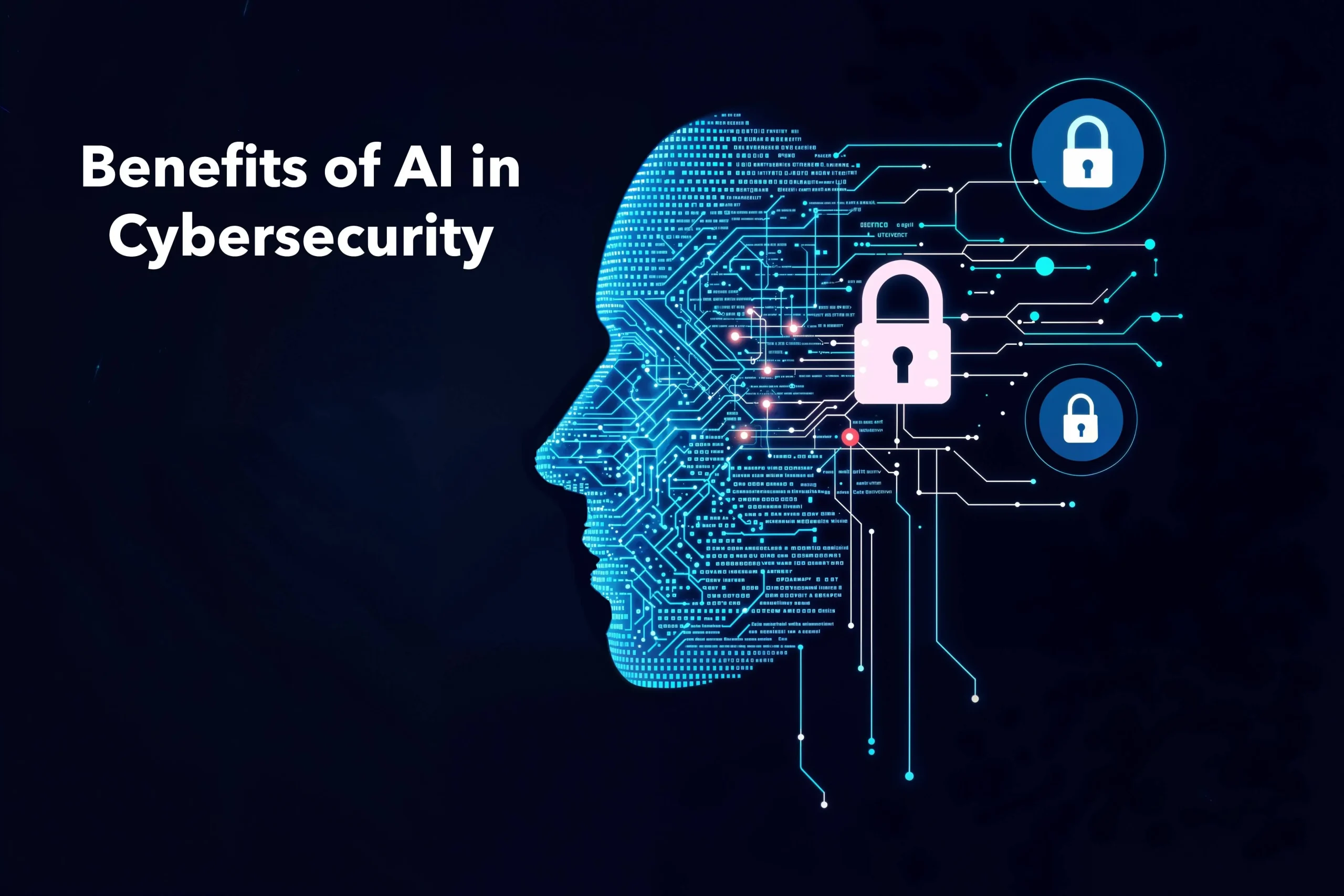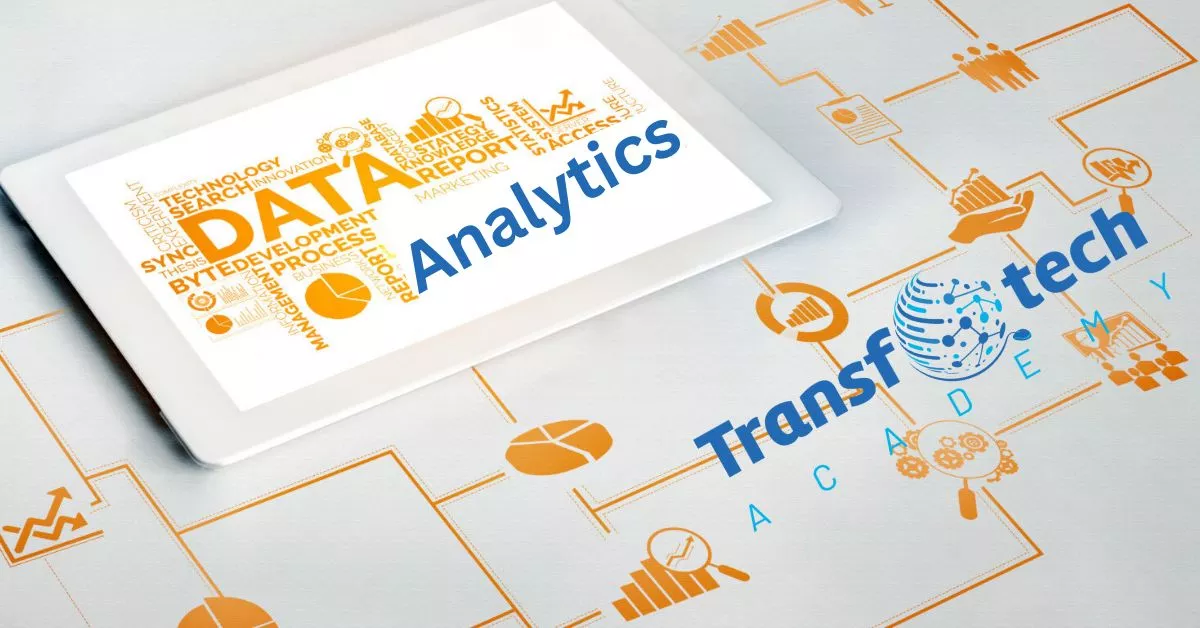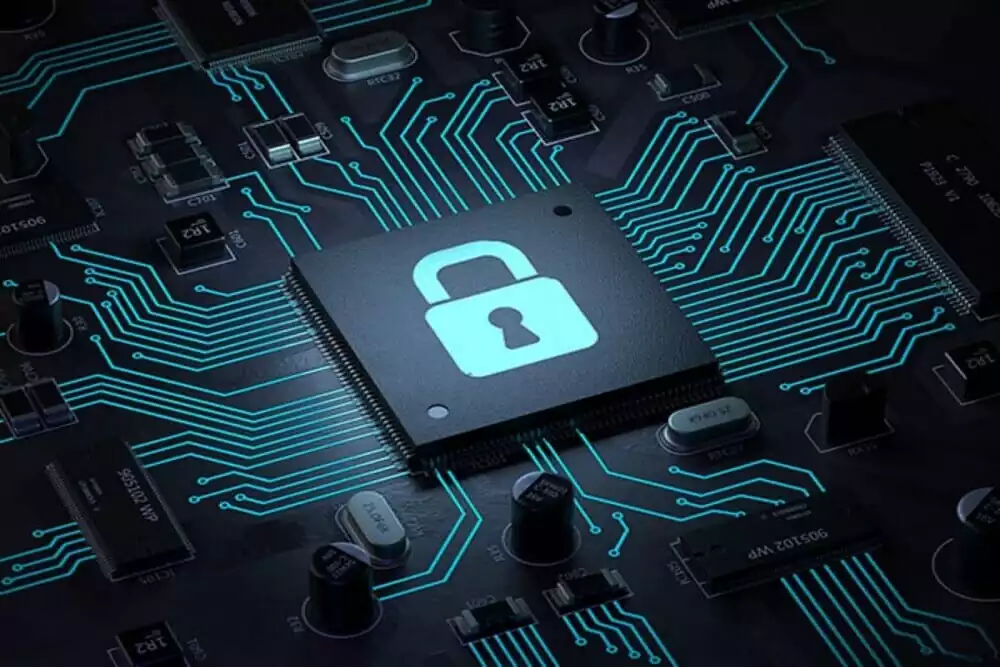In today’s connected world, cyber threats aren’t a question of if but when. And in today’s fast-moving digital world, traditional defenses aren’t enough, that’s where artificial intelligence (AI) comes in. It is no longer just a buzzword. AI is actively transforming the way organizations detect, respond to, and prevent cyberattacks.
If you’re still relying solely on old-school firewalls and manual monitoring, it’s time to level up. This blog will walk you through how AI enhances Cybersecurity, how it helps professionals stay ahead of attackers, and why it’s becoming a critical pillar in modern digital defense strategies.
What is AI and Why Does It Matter in Cybersecurity?
AI empowered cybersecurity can predict, prevent and remediate attacks much faster than human-led manual processes, making it mandatory for supporting complex cyber-attacks such as ransomware, phishing, and zero-day evolutions. When we view AI in cybersecurity, we must consider that it can, like a human, process complex datasets – it also learns from continuously updating threat intelligence.
In cybersecurity, AI is trained to
- Recognize abnormal patterns in user behavior.
- Detect malware or phishing attempts.
- Respond to cyber threats faster than any human ever could do.
By automating these processes, AI reduces the pressure on security teams while increasing detection accuracy and response times. So humans can invest time planning for strategic defensive processes. Incorporating AI into security systems not only helps reduce human error but also enhances an organization’s overall security posture, regardless of its size.
AI Cybersecurity vs Traditional Cybersecurity: A Comparative Overview
Cybersecurity is more important now than ever before. With cyber threats growing smarter, organizations must choose the right protection methods. Two main types exist: traditional cybersecurity and AI-driven cybersecurity. Knowing how they differ helps you pick the best solution for your security needs.
Here’s a quick look at the main differences:
| Aspect | AI Cybersecurity | Traditional Cybersecurity |
| Detection | Spots unusual behavior and predicts attacks | Uses known threat signatures and rules |
| Response Speed | Reacts instantly and automatically | Depends on manual or semi-automatic steps |
| Adaptability | Learns and improves with new threats | Stays fixed, relies on existing data |
| Threat Coverage | Finds both new and known threats | Mainly catches known threats |
| Human Role | Mostly supervision, less hands-on | Requires constant human monitoring |
| False Alerts | Fewer false alerts due to smarter learning | More false alerts because of strict rules |
| Handling Complexity | Good at complex, layered attacks | Struggles with sophisticated threats |
| Cost Efficiency | Saves money long-term through automation | Higher costs due to manual effort |
In summary, AI cybersecurity offers faster, smarter protection and adapts as threats evolve. Traditional methods still matter but can be slower and less flexible. For the best security, combining both approaches is often the smartest choice.
Generative AI Is Reshaping the Cybersecurity Threat Landscape
The rapid rise of generative AI has paved the way for faster and more sophisticated cyber threats. Tools like ChatGPT are now being misused by cybercriminals to launch dynamic phishing campaigns, create malicious code, and even produce deepfakes, all at machine speed.
1.AI-Driven Cyber Threats on the Rise
Unlike traditional attacks, AI-powered threats are constantly evolving, making them far more difficult to detect. In early 2023, Darktrace reported a 135% surge in new social engineering attacks, closely connected to the widespread adoption of generative AI.
2.Internal Risks: Data Leaks & IP Loss
With employees increasingly using generative AI at work, risks of data leakage and intellectual property exposure are rising. In one case, over 1GB of company data was nearly uploaded to an AI tool before being stopped, highlighting how easily sensitive info can slip out.
3.The Privacy Challenge
Businesses may want to train AI using their own data, but doing so without proper safeguards raises serious privacy and security concerns. Sharing confidential data with third-party AI platforms can lead to unintended exposure.
4.Why AI-Driven Security Is Essential
Traditional defenses that rely on known threats are no longer sufficient to stay secure. Companies need AI-powered cybersecurity solutions that detect abnormal behavior in real time and respond instantly to unknown attacks and insider threats.
Generative AI and large language models (LLMs) in terms of benefits and cybersecurity risks:
Generative AI capabilities, powered by LLMs, are changing the way we work, enhancing workplace productivity by enabling natural language processing and automation potential. Powered by massive datasets, large language models (LLMs) can comprehend human language and produce human-like text, code, and beyond.
Benefits of Generative AI and LLMs
- Boosts productivity by improving writing, translation, and data analysis tasks.
- Provides security solutions (automatic reporting of threats, phishing simulations, and more natural language query systems).
- Improves creativity and user engagement through interactions that mirror human interaction.
Security & Privacy Risks of Generative AI and LLMs
- Data privacy risks arise when employees enter sensitive and/or proprietary information into generative AI tools such as ChatGPT.
- LLMs have the propensity to “hallucinate” meaning they can produce false, misleading data which may influence decision-makers.
- Prompt injection attacks (i.e. like SQL injection attacks) constitute security risks, exploiting LLMs through prompt injection, allowing a malicious prompt to take control of or exfiltrate LLM data.
Self-Learning AI: Smarter, Real-Time Cybersecurity
Self-Learning AI is a powerful cybersecurity solution that learns an organization’s behavior in real time. Using advanced machine learning techniques, like neural networks, Bayesian models, and clustering, it builds a baseline of “normal” activity across users, devices, and systems.
Why It Matters
- Detects zero-day threats and anomalies without relying on known signatures.
- Identifies insider threats, misconfigurations, and generative AI-driven attacks.
- Adapts continuously by analyzing live organizational data.
- Responds in real time to suspicious behavior.
Self-Learning AI delivers adaptive, real-time protection against today’s most complex cyber threats, making it an essential tool for modern businesses.
How AI Works in Cybersecurity:
AI-powered cybersecurity uses machine learning (ML), deep learning, and other advanced analytics. Here’s how it works:
1. Machine Learning (ML):
This is the foundation. ML algorithms are trained on historical data—like known threats—to learn how to identify similar risks in the future.
2. Deep Learning:
A more advanced form of ML, it mimics the human brain using neural networks. It can process unstructured data such as emails, documents, or images to detect threats.
3. Behavioral Analysis:
AI monitors network and user behavior in real-time. It learns what “normal” looks like and flags anything unusual.
How Does AI Fight Against Cybercrime?
1.Behavioral Analysis: It monitors activities by users and the system and detects any behavior that may be considered illegal. By learning the normal pattern of operations, AI can immediately alert when it detects irregular behavior, such as unauthorized access or unusual data transfers.
2.Threat Intelligence and Prediction: It compiles data emanating from worldwide threat feeds and previous cyber attacks to predict possible attacks and thus, enables establishment of defensive measures against the possibility of preventing attacks rather than reacting to them.
3.Automated Incident Response: Post-detection of threats, AI reacts to contain the threat, such as isolating affected machines or blocking suspicious IP addresses. This automated response facilitates fast mitigation and recovery.
4.Advanced Malware Detection: AI-powered tools look beyond traditional antivirus software that relies on signature recognition and use heuristic analyses and deep learning for looking at novel variants of malicious code by suspicious behaviors.
5.Phishing Defense: AI algorithms are scrutinizing emails and websites for phishing attacks, aiming to identify fraudulent communications trying to steal identities or deploy malware.
With these techniques, AI works to leverage cybersecurity so that it’s always a step ahead as cybercriminals keep changing their styles of attack.
Benefits of AI in Cybersecurity
1. Real-Time Threat Detection
AI doesn’t sleep. It operates 24/7, scanning systems for potential vulnerabilities or anomalies. Whether it’s a sudden spike in data transfer or a login from an unusual location, AI can flag and act on threats in real time.
2. Reduced False Positives
Security teams often drown in alerts. But not every alert signals a real threat. AI significantly reduces false positives by analyzing context and recognizing whether behavior is genuinely suspicious.
3. Proactive Threat Mitigation
Traditional security systems are reactive, they respond after an attack occurs. AI flips the script. It identifies vulnerabilities and suggests patches or solutions before an exploit happens.
4. Enhanced Incident Response
When a breach occurs, every second counts. AI can automate incident response workflows, isolate affected systems, and start remediation, all within seconds.
5. Scalability Without the Overhead
Cybersecurity AI tools scale effortlessly. Whether you have 100 or 100,000 endpoints, AI can monitor them all without hiring dozens of analysts. Even It works across cloud, hybrid, and on-premises systems.
6. Learning Over Time
Through machine learning, AI adapts changes with the threat landscape and gets better at defending against new attack methods presented by hackers.
7. Addressing Skill Gaps in Cybersecurity
There’s a massive shortage of cybersecurity professionals globally.AI bridges the gap by automating routine tasks and boosting human abilities.
8.Cost Efficiency
Cost of operating is lowered because of automating security tasks, reduced manual work, and diminished costs linked to cyber incidents.
Use Case of AI in Cybersecurity
Artificial intelligence is transforming cybersecurity by enabling organizations to detect threats faster, respond faster, and reduce vulnerabilities. The following are the best use cases to illustrate AI’s influence.
1. AI-Enabled Threat Detection
AI can analyze network traffic and user behavior to detect anomalies that may indicate potential hacker activity. This means that it can now detect zero-day threats and unknown malware in a way that is impossible for traditional antivirus programs. These types of threats go undetected by traditional methods, so protecting data from the outset is priceless.
2. Better SIEM
Security Information and Event Management (SIEM) becomes a whole lot better with AI. Specifically, built-in AI assists by filtering out false positives, prioritizing alerts or urgent situations, and recommending fixes to the problems, which are especially relevant to Security Operations Centers/SOCs.
3. Automated Incident Response
Artificial intelligence facilitates immediate response actions that can mitigate and contain damage, to include the isolation of a device or revocation of access. This reliable detection, automation, and decision making safeguard assets and allow for a more consistent response to threats.
4. Phishing Detection
“Artificial intelligence employs natural language processing to systematically analyze emails, including links, domains, and message content, to identify potential phishing attempts. As a result, it improves an organization’s ability to protect employees from falling for scams.
5. Endpoint Protection
AI monitors devices such as laptops, smartphones, and IoT devices to identify abnormal activity at endpoints, even when employees are working from home.
6. User and Entity Behavior Analytics
AI collects data to establish normal behavior, which allows employers to identify insider threats and compromised accounts. AI can then flag suspicious activity in regards to users, such as large downloads or odd logins.
7. Vulnerability Management
AI scans for security gaps and prioritizes patches based on risk and business impact, helping IT teams fix critical vulnerabilities faster.
Limitations of AI in Cybersecurity

AI isn’t a silver bullet. It has limitations:
- Can’t always understand context the way humans do.
- May misinterpret rare or ambiguous scenarios.
- Can be manipulated with poisoned data or prompt injections.
That’s why AI is best used to assist human analysts, not take their place.
How Can We Leverage AI for Cyber Security Advancements
As cyber threats grow more complex, leveraging AI in cybersecurity has become essential for smarter, faster, and more proactive defense. Here’s how AI is driving major advancements in digital protection.
1.Smarter Threat Detection in Real-Time
AI analyzes large volumes of data to instantly detect suspicious behavior and zero-day threats. With real-time threat detection, businesses can block attacks before they cause damage.
2.Predictive Cyber Defense
Using machine learning and predictive analytics, AI forecasts vulnerabilities based on past data. This allows organizations to fix weak points before hackers exploit them, making proactive cybersecurity a reality.
3.Automated Incident Response
AI enables automated security response, reacting to threats within seconds by isolating systems, blocking IPs, or shutting down risky activity. This reduces human error and shortens response time dramatically.
4.Smarter SOC Operations
AI reduces alert fatigue in Security Operations Centers (SOCs) by filtering out false positives and prioritizing real threats. This helps security teams focus on what truly matters.
5.Stronger Cloud and Endpoint Protection
AI tools monitor endpoints and cloud environments 24/7, securing everything from laptops to servers against malware, ransomware, and advanced persistent threats (APTs).
6.Behavioral Analytics for Insider Threats
With User and Entity Behavior Analytics (UEBA), AI spots unusual activity like unauthorized logins or mass file downloads, helping catch insider threats early.
Learn Cybersecurity with Transfotech Academy

To stay ahead in the evolving cybersecurity landscape, gaining the right skills is essential. Transfotech Academy offers specialized cybersecurity courses in the USA designed to equip professionals with practical knowledge in AI-powered security, threat detection, incident response, and more.
Whether you’re a beginner or looking to upskill, its expert-led programs provide hands-on training aligned with industry demands. Applying the Right AI to the Right Cyber is the biggest Security Challenge and Transfotech Academy emphasizes it.
Upcoming Courses
- AI Powered Full Stack QA Testing Course
- Cybersecurity Engineering: Penetration Testing with Generative AI
- AI for Work: Leveraging AI in Modern Workplace
Enroll now to build a strong foundation and advance your career in cybersecurity with Transfotech Academy.
Conclusion
AI is reshaping cybersecurity. It’s fast, smart, scalable, and constantly evolving. From detecting phishing attempts and malware to automating response and predicting breaches, AI empowers businesses to stay ahead of ever-evolving threats.
But it’s not about man vs. AI. It’s man + AI.
When AI tools are used thoughtfully, alongside skilled cybersecurity professionals, they create a powerful, proactive defense against modern cyber threats.
Whether you’re a small business or an enterprise giant, adopting AI in your cybersecurity strategy isn’t just smart, it’s essential.
FAQs
1. How does AI improve cybersecurity?
AI enhances cybersecurity by enabling real-time monitoring, automating threat detection, reducing false positives, and speeding up response time.
2. Can AI replace cybersecurity professionals?
No. AI supports and augments human teams by automating repetitive tasks. Human supervision plays a key role in upholding ethics and directing strategy in complex environments.
3. Is AI effective against zero-day attacks?
Yes. Self-Learning AI can detect behavior anomalies even from unknown threats, making it a key defense against zero-day exploits.
4.Are there any risks associated with applying AI in cybersecurity?
AI in cybersecurity carries several risks, including data bias, lack of transparency in decision-making processes, and over-reliance on automated systems. Strong governance and sustained human involvement are key to mitigating these risks.
5. How does AI help small businesses improve their cybersecurity posture?
AI tools enable small teams to accomplish more with less, offering scalable and affordable solutions for threat detection and defense.






